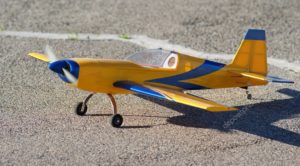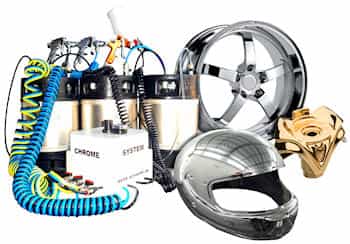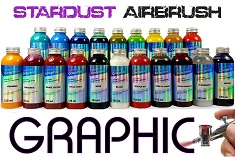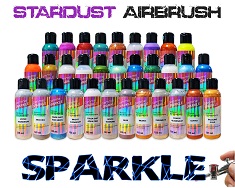Here are some answers to frequently asked questions by model-makers who try to practice painting on their aircraft models!
Which paint should I choose to keep a miniature airplane lightweight?
When talking about flying models (not the static plastic models), or even real fighter jets or airliners, one central point is the total weight of the various layers of paints. Here are several parameters to consider:
Water-based or solvent-based paints?
First of all, a paint is composed of evaporable material and solid matter (solid content/kg of liquid product) which, after application, become microns thick (weight in g/m²)
Water-based paints have a higher solids content compared to solvent-based paints. Therefore, it’s better to choose solvent-based paints, which form a thinner and lighter final layer, for the same coverage rate.
Here is an example of solvent-based paints for modeling with the Graphic range.
The paint system:
Consider using versatile and efficient products to limit the number of paint steps and passes (primers, paints, topcoats): some products are two-in-one, or even three-in-one systems, as they provide adhesion, and can be used as paint and protective finish.
The thickness:
The wet thickness (from 50 to 150μm) is distinguished from the dry thickness (generally from 10 to 50μm). Apply as little paint as possible. To obtain a thin and well stretched coat, increase the thinning.

For multi layer decoration with masking and colours:
Reduce the thickness to a minimum. Dry paint areas can be sanded gently with water to reduce “stairs” effect.
When painting on masked areas, it is recommended not to “load” paint on the edges around the adhesives.
Material and paint compatibility
Models made from wood, composites, polystyrene-type foam or other materials such as EPP or EPO are more resistant to solvents.
In case of doubt, there are two solutions:
-
Isolate the surface with a polyurethane acrylic water-based topcoat
-
Spray 2-3 ultra-thin “flash” layers of solvent-based paint or clear coat on the surface, then wet the surface with the paint without the risk of reaction.
Generally avoid the paints sold for the general public in supermarkets because they create reactions when they are coated with solvent-based paints.
Which tool to use? Spray gun, airbrush or aerosol?
Unquestionably, the mini (0.8 mm) or standard (1.4 mm) spray gun is recommended It allows to apply clear coat, prime or paint accurately.
Airbrush use is restricted for fluid products or thinned products, and for painting masked areas. It is not intended for painting or applying topcoat on an entire model!
As for the spray can, although practical and fast, it poses certain challenges: it doesn’t allow to control the spray or the pressure, and above all, it is not very productive, as it contains mainly gas, and little product!
Should we always apply a primer? If so, what type?
No. A primer should only be applied if necessary, in the following cases:
-
adhesion required on bare material difficult to adhere to > adhesion primer
-
need to fill, smooth, repair the surface > “filler” primer
These are the various types of primers that exist, and they have different functions.
When you have a wooden model already primed, it is quite useless to apply a primer. The same applies for the backgrounds with old sanded paints.
What is the resistance of paints and topcoats to fuels?
Experience shows that commercial and supermarket paints are completely contraindicated because they melt immediately.
As for polyurethane acrylic topcoats, although they are water-based products, they provide a good resistance if they come into contact, accidentally or occasionally, with gasoline, but not more!
For maximum resistance to fuels, a lacquer or solvent-based polyurethane topcoat must be applied.
Read more by checking this discussion on model making and model airplanes.


































































Leave a Reply